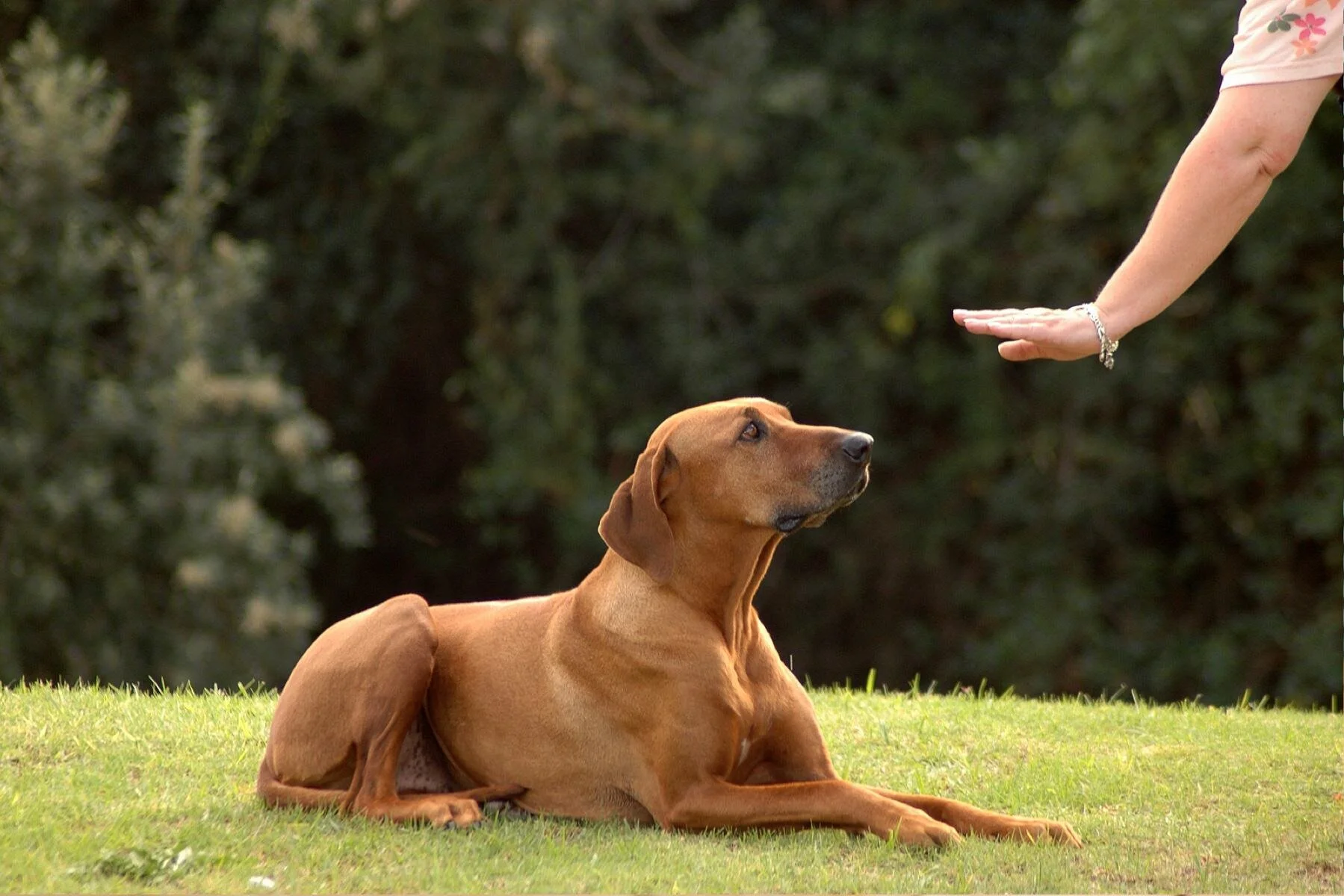Why is my dog so stubborn?
I often hear from clients and friends that their dog is “stubborn” or some other variation on that term—“headstrong,” “willful,” “pigheaded" sometimes even “dumb.” Yet, I've never personally met a stubborn dog. This is probably a shocking statement to many pet parents, so I’ll explain. One definition of stubborn is “having or showing dogged determination not to change one's attitude or position on something, especially in spite of good arguments or reasons to do so.”
But dogs are one of the most successful species on the planet when it comes to worming their way into people’s lives, and onto our couches and our beds. The American Veterinary Medical Association notes that 47% of households in the U.S. now have at least one dog. And increasingly, evidence shows that the domestication of dogs has resulted in animals that are remarkably cooperative with humans (see The Secret Life of the Dog). So why do so many pet parents see their dogs as stubborn?
How to train a stubborn dog
Whenever a client tells me a dog is stubborn, I always ask for additional information, and inevitably what I discover is the dog isn’t complying with some command for some specific behavior. I’ve seen many dogs not comply with what their human was asking of them. But my first thought when a dog does not comply with a command or cue goes somewhere other than “stubborn.” There are usually 3 different reasons a dog might be viewed as stubborn.
Is the dog afraid?
The most common reason for a dog to hesitate when asked to do something is fear, so I look for fearful or submissive body language (they pull back their ears, lower their bodies, tuck their tails, and avoid eye contact - see Fear Free Happy Homes video on Dog Body Language 101 for more information). I’m often surprised to hear this described as “stubborn” when the dog is clearly showing that he is afraid. It’s not always clear why he’s afraid. The client may be calling Fido to do something that he finds unpleasant or scary (like get in a car). Or they may be calling Fido using a tone that is disapproving so that Fido is anticipating punishment. Maybe I see more dogs that are fearful because I work with many dogs who show more than the typical common misbehaviors (jumping, digging, running away). The dogs I see often show a variety of fear-based behaviors, like fear of unfamiliar people, phobias, separation distress or fear-based aggression. Calling a fearful dog stubborn in these cases is a clear miscommunication between dog and person.
Is something more interesting?
This is usually my next thought. Is there something in the environment that is more compelling for the dog than doing what the client is asking him to do? It’s easy to forget that dogs are ultimately self-interested little beings. Dogs do what seems to be most interesting to them at that time. I would not call this self-interest stubbornness because I can usually make a “good argument” or provide the “reasons to do [what is asked]” in a way that a dog can easily understand.
Remembering that dogs are ultimately in it for themselves is most useful to me when I think about training something I know a dog will be reluctant to do because it may end something fun he is doing. For example, one of my dogs loves to run and bark after the neighbor’s lawn mower. I give her a very good reason to come inside when I call her at this time. When she comes in, she gets to have her special treat, some freeze-dried liver. Even when she is in hot pursuit of the lawn mower on the other side of the fence, she will respond to my recall cue because my argument or reason for doing so is compelling to her. Explaining that she has to do it “because I said so” is not likely to get much traction from her perspective.
Is the dog confused?
My final thought about why a dog is not responding to an owner’s cue is confusion. This is usually the most fun to fix. We humans often believe we have been clear in our communication (don’t we do this with people too?) So I’ll ask a client to explain the cue to me. Once the client has to think about it, she is not always sure what the cue is. She thinks it might be the word she is saying or maybe the hand signal she is giving. We often “speak” to our dogs casually without really considering if specific words or signals have been taught to them.
Usually clients will show me that they “speak” to their dog with multiple cues, a word and a hand signal and usually some other movement like bending at the waist. When I ask them to separate these three to see which the dog responds to, they are usually surprised to find out that the dog is responding to a part of the signal that they didn’t even know they are doing. For example, I recently watched a woman ask her dog to sit. She said the word “sit” at the same time that she raised her hand and then bent forward to her dog. Her dog stood wagging happily at her but did not sit. The woman paused for a moment, then said the word “sit” again and touched her dog’s rear. The dog immediately sat. She called this dog “hard-headed.” From what I could see, the dog was perfectly willing to comply with the request to sit. The request from the dog’s perspective was a touch on the rump. The dog clearly did not understand the word “sit” and he did not understand the hand signal or the forward leaning movement the owner was also doing. He was not a stubborn dog, just a dog that needed a little more education.
Dog training for stubborn dogs
So whenever I meet someone’s “stubborn” dog, I consider the answers to the questions: Is the dog afraid? Is something more interesting to the dog? Is the dog confused? If the answers to any of these is “yes,” then I can fix those problems. I can teach a clear cue, make a compelling argument and change a dog’s fear. So, in effect, I can train any stubborn dog.
If you think you might have a stubborn dog, seek the help of a qualified dog training or dog behavior professional (see the information on our The Right Start To Training page to learn more about finding a qualified professional). Then be prepared to be amazed by your dog’s cleverness.
About the author: Dr. Lorraine Martinez is the founder of LOMA Behavior and Training LLC and has been helping dogs and their people since 2002. She earned a PhD in psychology from the University of Washington and went on to graduate with distinction from the Karen Pryor Academy for Animal Training. She is a Behavior Consultant affiliated with the American Veterinary Society of Animal Behavior and is a Fear Free Certified Professional.




